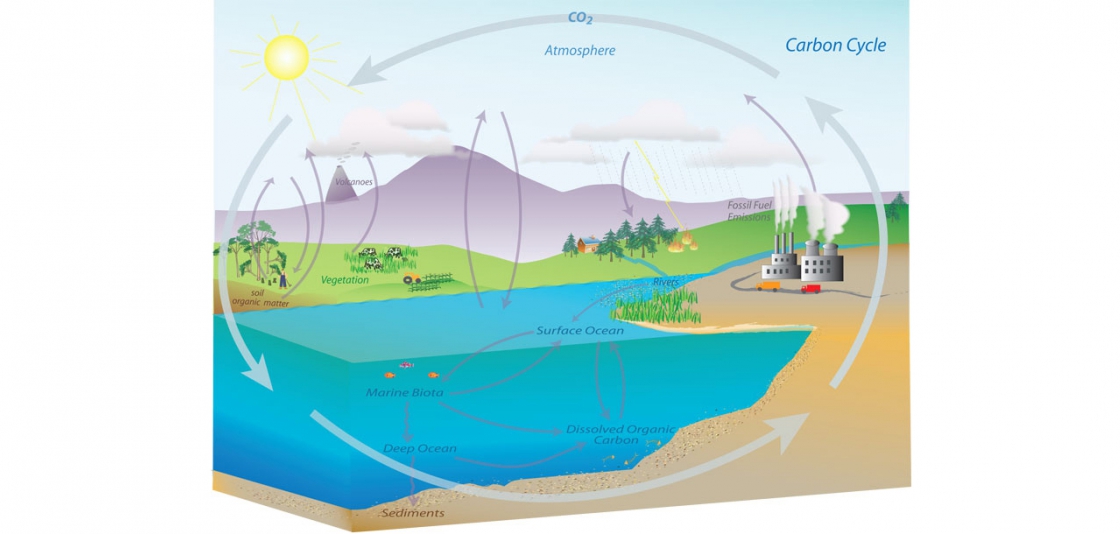Where are the major carbon stocks on Earth?
In this activity, students will act out the stocks and flows of carbon through the Earth’s systems. The goal is to visualize and act out the flows of carbon as it changes form from the trees and soil to the atmosphere and ocean. It will also demonstrate how fossil fuel extraction and combustion are disrupting the carbon cycle as it naturally occurs.
Steps:
Intro to Carbon: # 6 on the periodic table, one of Earth's most abundant elements, takes many forms, talk about how trees are mostly made of carbon etc. Important to discuss how carbon is essential, and a specific amount of it is needed in the atmosphere to provide a blanket that regulates temperatures on earth. Trees and their process of synthesizing carbon helped create the foundation for life on earth.
Cut out 30 small brightly colored carbon tickets. and make 6-8 signs, with strings so folks can wear them around their necks, for different carbon sinks with symbols signifying each carbon sink (fossil fuels, oceans, atmosphere, forests, soils) also have some who are the people doing different industrial processes (cars and trucks, industry, oil extraction, farming, compost production).
Have 6-8 volunteers come up and have the carbon sinks line up (no particular order)
Provide 1/4 carbon tickets to the atmosphere, about half to fossil fuels, a few to everyone else as a starting point. Act out the extraction of oil and use in cars and trucks and other industrial processes, burdening the atmosphere with too many carbons. Act out some deforestation, taking some of the carbons from the forest and putting them in the atmosphere. Act out the ocean taking up excess carbon from the atmosphere and explain that this causes acidification. Have the ocean actor start to act sick as more carbon comes to them. Have the teacher be the “narrator” of what processes are taking place and who needs to transfer carbon to whom. You could have another student by the “carbon transfer agent,” taking carbon tickets from one sink to another.
Repeat with any industrial processes taking place in your community/applicable to the crowd. (for industrial ag, make sure to act out the extraction of fossil fuels for fertilizers and pesticides and sending them to the atmosphere).
Then act out a regenerative farming practice which grows organic crops and trees, which take C out of the atmosphere, and turns it back into the soil. Explain how soil carbon sequestration is not regenerating fossil fuels but is returning C to the topsoil, which has capacity for a lot of other benefits such as water retention, reduced pesticide use, and greater soil fertility. It’s important for that carbon to get into the soil and stay there, so you want to use perennial plants and low or no tillage to keep the carbon locked in a moving deeper into soil layers rather than re-releasing to the atmosphere.
Debrief the activity: how did the students feel who were acting as the atmosphere, ocean, fossil fuels, soil, trees, farming activities, etc.? Can they think of other ways besides farming to get carbon out of the atmosphere? What questions do they still have about the carbon cycle in relation to climate change?
**Activity credit: Janaki Jagannath, Community Alliance for Agroecology and U.C. Davis Law School
